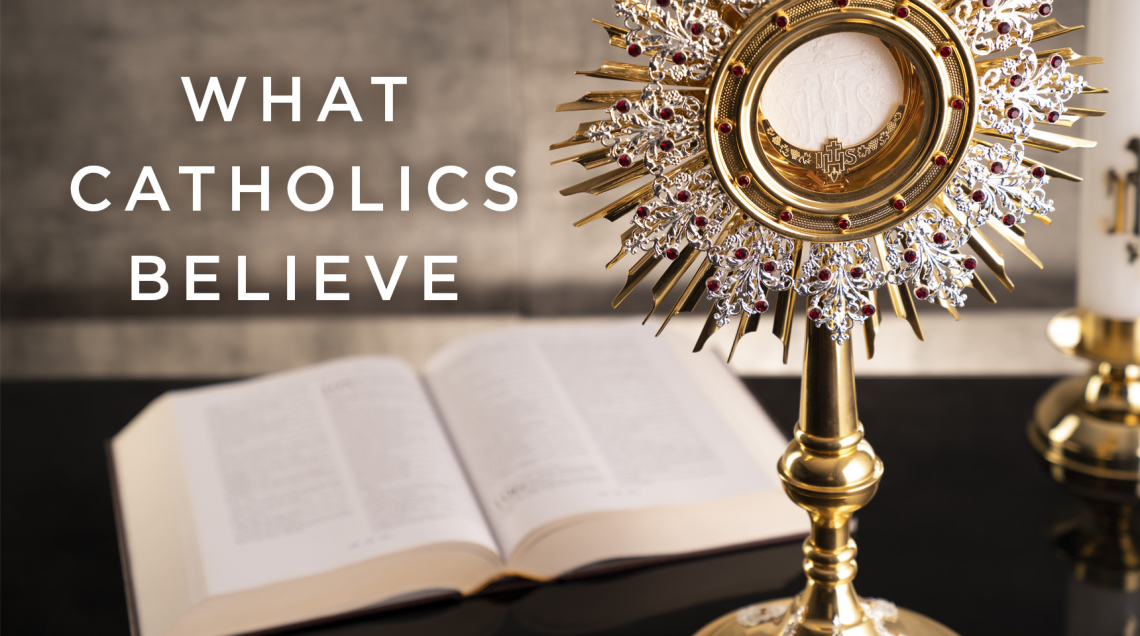The Mass: Bless the work of our hands

The two principal parts of the celebration of Mass are the Liturgy of the Word and the Liturgy of the Eucharist. The Liturgy of the Eucharist begins with the portion of Mass known as the preparation of the gifts, meaning, the preparation of the bread and the wine that will be offered to God and consecrated by God. The preparation of the gifts is one of the rare times during Mass when the priest is doing one thing and everyone in the assembly is doing something else. During the preparation of the gifts (formerly called the offertory), most people in the church are singing the offertory chant or song and preparing to make their offering in the collection basket, at least at most Sunday Masses. In contrast, during the rest of Mass, the priest and the faithful are listening to the readings together, reciting prayers together, praying to God together even if the priest is praying out loud and the people are praying silently along with him. However, whenever there is singing during the preparation of the gifts, the priest on the one hand and the faithful on the other find themselves doing different actions simultaneously.
When the priest takes the bread in the form of hosts in order to place them on the altar for the purpose of offering them to God, he says a prayer that thanks God for the bread. That prayer begins, “Blessed are you, Lord God of all creation.” The end of the prayer makes clear the reason why this unleavened bread is being placed on the altar, that is, so that it may become for us “the bread of life,” recalling Jesus’s miraculous multiplication of the loaves and His teaching in St. John’s Gospel (Chapter 6) that He Himself is the “bread of life.”
Before saying the parallel prayer with the wine, the priest adds a minute amount of water to the wine in the chalice. The prayer that accompanies this gesture is never said out loud, even when there is no singing to accompany the actions taking place. It is a beautiful prayer, which some maintain was inspired by a Christmas homily by Pope St. Leo the Great (c. 400-461). The priest says, “By the mystery of this water and wine may we come to share in the divinity of Christ, who humbled himself to share in our humanity.” It was typical in ancient times to add water to wine, but once this household practice became a part of the liturgy, it was given a spiritual sense. Many commentators over the centuries associated the drop of water with our humanity and the chalice of wine with Jesus’s divinity. Both are combined in the chalice such that they can never be separated. Our humanity becomes part of the identity of Jesus, Son of God, and in return, Jesus shares with us attributes of His divinity, namely, immortality in heaven. Once this gesture has taken place, the priest thanks God for the gift of wine that God gives to us so that we can offer it back to God to be transformed into the blood of Christ.
Then the priest bows before the altar and offers another prayer to God in a low voice that is meant to be unheard by those in attendance, even when there is no singing: “With humble spirit and contrite heart, may we be accepted by you, O Lord, and may our sacrifice in your sight this day be pleasing to you, Lord God.” The priest then washes his hands, not for practical reasons but for spiritual ones, to show that he wishes to enter into the Eucharistic Prayer with a clean heart free from sin.
At some Masses, the priest then blesses incense and uses incense to honor the bread and wine to be offered to God. These gifts of bread and wine are honored as something holy even before they are actually consecrated because they will be consecrated and are already set aside to be transformed into the presence of Christ Himself. Similarly, the priest incenses the crucifix, which bears the representation of Christ’s body, and the altar, which is the symbolic presence of Christ in the midst of the church.
Finally, the priest invites the people to pray, “Pray, brothers and sisters, that my sacrifice and yours may be acceptable to God the almighty Father.” We respond, asking God to accept the sacrifice at His hands. The entire preparation of the gifts ends with a prayer, another collect, which is specific to the day. That prayer over the gifts, as it is called, often repeats the request to God to accept the offerings placed before Him on the altar.
Next, this series will guide us step by step through the heart of the Liturgy of the Eucharist, the Eucharistic Prayer.










